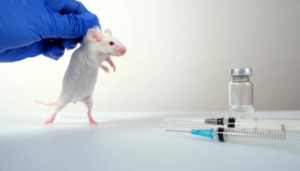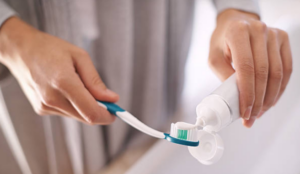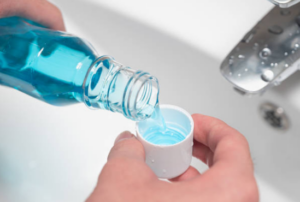Ending Animal Testing for Toothpaste and Mouthwash

In the pursuit of a radiant and healthy smile, consumers are becoming increasingly conscious not only about the ingredients in their oral care products but also about the ethical practices of the brands they choose. One significant ethical concern in the beauty and personal care industry is animal testing. This blog delves into the world of cruelty-free oral care, exploring the current state of the industry, the importance of ending animal testing, and spotlighting brands that champion cruelty-free practices in toothpaste and mouthwash development.
The State of Animal Testing in the Beauty Industry
Animal testing in the beauty industry has a long history, dating back to the mid-20th century when regulatory authorities and companies began conducting safety assessments on cosmetics and personal care products. Animals such as rabbits, mice, rats, and guinea pigs were commonly used in tests, subjected to various procedures to evaluate the safety and potential side effects of ingredients. These tests often included skin and eye irritation studies, where substances were applied to the animals’ skin or eyes, sometimes causing severe reactions.
For decades, animal testing was considered an industry norm, and regulatory agencies required such testing to assess the safety of cosmetic products before they could be introduced to the market. However, as awareness of the ethical implications and concerns about the reliability of animal testing methods grew, so did the push for change.
Current Practices:
Despite advancements in alternative testing methods, animal testing for cosmetics and personal care products still occurs in some regions and by some companies. Common tests include acute toxicity tests, where substances are administered to animals to determine their lethal dose, and repeated dose toxicity tests, which assess the effects of prolonged exposure.
China, for example, historically required mandatory animal testing on cosmetics sold in the country. However, positive strides have been made in recent years, with China announcing in 2020 that it would no longer require animal testing on domestically-produced ordinary cosmetics. This shift marked a significant step forward, though challenges persist for companies wanting to sell imported cosmetics in China, where animal testing requirements remain.
Alternatives and Technological Advances:
Advancements in technology and a growing understanding of cellular and molecular biology have paved the way for alternative testing methods that are more accurate, humane, and efficient. In vitro testing, which involves studying cells or tissues in a controlled environment, is one such alternative. This method allows researchers to assess the safety and efficacy of cosmetic ingredients without the need for animal subjects.
Other innovative approaches include organ-on-a-chip technology, microdosing studies, and computer-based modeling. These methods not only provide more accurate results but also better mimic human responses, addressing the limitations of animal testing.
Global Regulatory Changes:
In response to the ethical concerns surrounding animal testing, various countries and regions have implemented or are considering legislative changes to reduce or eliminate the practice. The European Union has been a trailblazer in this regard, implementing a complete ban on animal testing for cosmetics in 2013. This ban includes not only the finished products but also the individual ingredients.
Other countries, such as India and New Zealand, have also taken steps to ban or limit animal testing. Additionally, legislative efforts are underway in various jurisdictions to promote the use of alternative methods and phase out the reliance on animal testing.
Consumer Activism and Industry Response:
The power of consumer activism has played a pivotal role in pressuring the beauty industry to reassess its reliance on animal testing. Increased awareness among consumers about the ethical implications of animal testing has driven a demand for cruelty-free products. As a result, many beauty brands have responded by adopting cruelty-free practices, obtaining certifications like the Leaping Bunny, and committing to ending animal testing in their product development processes.
In recent years, there has been a notable surge in cruelty-free and vegan beauty brands entering the market. This shift reflects not only a changing consumer landscape but also an industry-wide acknowledgment of the importance of ethical considerations in product development.
Remaining Challenges:
While significant progress has been made, challenges persist in completely eliminating animal testing in the beauty industry. Some countries, especially in Asia, still have regulatory requirements that mandate animal testing for certain cosmetic products. This presents a dilemma for companies that want to access these markets while maintaining cruelty-free practices.
Moreover, the development and approval of new testing methods and their acceptance by regulatory authorities remain ongoing challenges. Bridging the gap between traditional animal testing and alternative methods requires concerted efforts from both the industry and regulatory bodies.

The Cruelty-Free Movement in Oral Care
The Cruelty-Free Movement in oral care is part of a larger trend where consumers are increasingly seeking products aligned with their ethical values. This movement reflects a growing awareness of the ethical implications of animal testing and a desire for products that prioritize both personal health and the well-being of animals.
Consumers are becoming more conscientious about reading product labels, researching brands, and actively seeking information about a company’s animal testing policies. Social media platforms, online forums, and advocacy websites play a crucial role in disseminating information and fostering a sense of community among individuals who prioritize cruelty-free products.
Impact on Industry Practices:
The surge in consumer demand for cruelty-free oral care products has had a profound impact on industry practices. Recognizing the shift in consumer preferences, many oral care brands have made significant changes to their testing methods and product development processes. This shift is not only a response to consumer demand but also a proactive stance to align with evolving ethical standards in the beauty and personal care industry.
Brands are increasingly transparent about their cruelty-free status, prominently displaying cruelty-free certifications on their packaging and marketing materials. Certifications such as the Leaping Bunny and PETA’s Beauty Without Bunnies program have become widely recognized symbols that signify a brand’s commitment to cruelty-free practices.
Importance of Ending Animal Testing:
- Ethical Considerations: Animal testing involves subjecting living beings to potentially harmful substances, causing distress, and often resulting in injury or death. Choosing cruelty-free oral care products reflects a commitment to ethical consumerism and the well-being of our fellow inhabitants on this planet.
- Technological Advances: With advancements in technology and alternative testing methods, there is a growing realization that animal testing is not the only way to ensure the safety of products. In vitro testing, computer modeling, and other innovative methods provide effective alternatives that do not harm animals.
- Consumer Demand: The power of the consumer cannot be underestimated. The increasing demand for cruelty-free products, including oral care items, has fueled a shift in industry practices. Brands are recognizing that cruelty-free practices are not just a moral choice but also a smart business decision driven by consumer preferences.
- Global Regulatory Changes: Governments and regulatory bodies are also taking steps to ban or limit animal testing. The European Union, for instance, has implemented a complete ban on animal testing for cosmetics, and similar efforts are gaining momentum worldwide. This global shift indicates a broader recognition of the need to prioritize cruelty-free practices.

Cruelty-Free Champions in Oral Care
- Tom’s of Maine: Tom’s of Maine has been a pioneer in the cruelty-free and natural oral care movement. Their toothpaste and mouthwash products are made with ethically sourced ingredients, and the brand is Leaping Bunny certified, signifying a commitment to cruelty-free practices.
- Hello Products: Hello Products is known for its vibrant and effective oral care products. They proudly display the Leaping Bunny logo on their toothpaste and mouthwash, ensuring consumers that no animal testing is involved in the creation of their products.
- Desert Essence: Desert Essence offers a range of cruelty-free oral care products, including toothpaste and mouthwash. The brand is committed to providing products that are not only effective but also environmentally friendly and ethically produced.
- Dr. Brite: Dr. Brite combines oral health with natural ingredients and cruelty-free practices. Their toothpaste and mouthwash offerings are Leaping Bunny certified, promoting a clean and healthy smile without compromising on ethics.
- Schmidt’s: Schmidt’s, known for its natural and innovative approach to personal care, extends its commitment to cruelty-free practices in its oral care line. Their toothpaste and mouthwash options are created with cruelty-free ingredients, reflecting the brand’s dedication to ethical choices.

Now that we understand the significance of cruelty-free oral care, let’s explore how individuals can make the transition to a more ethical and compassionate oral care routine.
- Educate Yourself: Familiarize yourself with cruelty-free certifications and logos, such as the Leaping Bunny or PETA’s Beauty Without Bunnies program. These symbols indicate that a brand has undergone rigorous assessments to ensure their products are cruelty-free.
- Read Labels: Take a closer look at the labels on your toothpaste and mouthwash. Look for ingredients that are not only effective for oral health but also cruelty-free. Many cruelty-free brands prominently display their commitment on packaging.
- Research Brands: Explore brands that are known for their cruelty-free practices. The internet is a valuable resource for researching and discovering new brands that align with your values.
- Engage with Brands: Reach out to your favorite oral care brands and inquire about their animal testing policies. Social media platforms are effective channels for engaging with brands and expressing your support for cruelty-free practices.
- Support Advocacy Organizations: Contribute to the larger movement by supporting advocacy organizations working to end animal testing. These organizations often provide resources, information, and campaigns that amplify the message against animal testing in the beauty industry.
As we embrace the era of cruelty-free beauty, it’s heartening to witness the positive changes occurring in the oral care industry. By choosing cruelty-free toothpaste and mouthwash, consumers not only prioritize the well-being of animals but also contribute to the broader shift towards ethical and sustainable beauty practices. Let our smiles radiate not only with good oral health but also with the joy of knowing that our choices make a difference in creating a more compassionate world. It’s time to let our oral care routine reflect not just our commitment to a healthy smile but also our dedication to a cruelty-free future.




